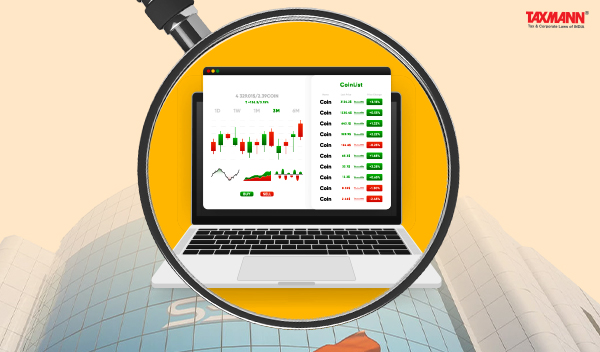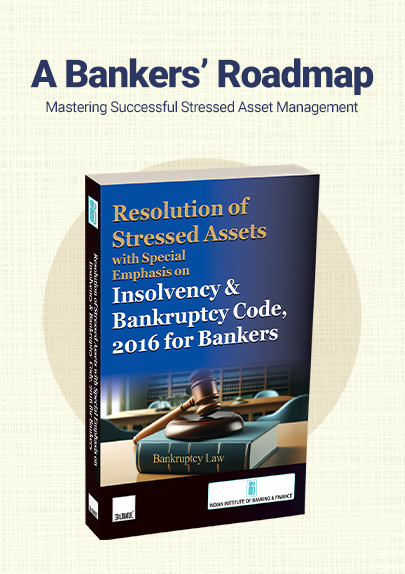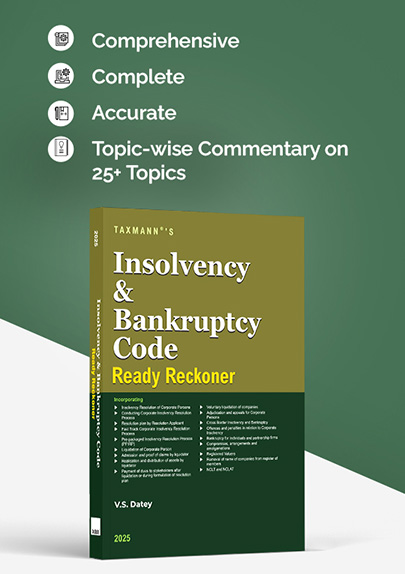Taxmann’s Analysis | SEBI’s Automated Trading Window Closure Enhances Transparency
- Blog|Advisory|Company Law|
- 5 Min Read
- By Taxmann
- |
- Last Updated on 15 February, 2025
Automated trading window closure is a system that automatically restricts designated persons and their immediate relatives from trading when they might possess unpublished price-sensitive information (UPSI). Implemented by regulatory bodies like SEBI, this mechanism replaces manual monitoring with a streamlined, technology-driven process, ensuring timely enforcement of trading restrictions. Automating the freezing and unfreezing of accounts, minimises errors, enhances compliance, and promotes market transparency and fairness.
Table of Contents
- Introduction
- What is Trading Window Closure?
- Existing Framework for Designated Persons
- Need for Extension to Immediate Relatives
- Process for Implementation of Automated Trading Window Closure System
- Benefits of Automation in Trading Window Closure
- Challenges in Implementing the Automated Trading Window Closure System
- Conclusion
1. Introduction
Have you ever wondered how the stock market stays fair, preventing those with inside knowledge from making a quick buck at everyone else’s expense? It’s a tricky thing, making sure everyone plays by the rules. That’s where the idea of a “trading window closure” comes in. It’s like a time-out for certain people with access to secret information. But what does it mean, and how are regulators trying to make it work better for everyone?
To strengthen this safeguard, SEBI has proposed automating trading window closures for the immediate relatives of designated persons in listed companies—a system initially applied only to designated persons themselves.
This move aims to streamline compliance with insider trading regulations and reduce the risk of accidental violations. As part of this initiative, the SEBI has released a draft circular detailing the automated system’s implementation, including data submission procedures and timelines for stock exchanges, depositories, and listed companies. Public feedback is invited, with the deadline for comments set for February 28, 2025. The proposal is designed to enhance transparency, simplify compliance, and further strengthen insider trading prevention.
2. What is Trading Window Closure?
The trading window closure is a period when designated persons (DPs) and their immediate relatives are restricted from trading in the securities of a listed company. This restriction is imposed when these individuals are reasonably expected to possess unpublished price-sensitive information (UPSI).
The primary aim of this measure is to prevent insider trading, ensuring that no one trades on non-public information that could unfairly impact stock prices.
3. Existing Framework for Designated Persons
Clause 4(1) of Schedule B, read with Regulation 9 of PIT Regulations, mandates that DPs and their immediate relatives must not trade securities during the trading window closure period. Historically, companies implemented this manually, relying on self-regulation and declarations by DPs.
To simplify compliance and minimise errors, SEBI introduced an automated framework in 2022. This included freezing the PAN of DPs at the security level during the closure period, initially applicable to NIFTY 50 and SENSEX-listed companies. By 2023, SEBI extended this framework to all listed companies in a phased manner, successfully reducing instances of non-compliance.
4. Need for Extension to Immediate Relatives
As per regulation 2(1)(f) of PIT Regulations, “immediate relative” means a spouse of a person and includes the parent, sibling, and child of such person or of the spouse, any of whom is either dependent financially on such person or consults such person in taking decisions relating to trading in securities.
As immediate relatives often have access to unpublished price-sensitive information (UPSI), they represent a potential vulnerability in insider trading regulations.
A significant loophole existed where relatives of DPs could trade securities during the closure period, even if the DPs themselves were restricted. For instance:
- A DP’s spouse could trade securities based on financial disclosures that are not yet public by passing existing restrictions.
- Siblings or dependent parents could act on advice from the DP during the closed window.
To plug these gaps, SEBI proposes extending the automated restrictions to immediate relatives, ensuring comprehensive compliance with PIT Regulations.
5. Process for Implementation of Automated Trading Window Closure System
To ensure seamless compliance with SEBI’s PIT Regulations and prevent insider trading, the automated trading window closure system outlines the following step-by-step framework:
- Portal Access for Trading Window Management – Designated Depositories (DDs) provides access to listed companies via a portal for managing trading window closure information.
- Auto-Population of Designated Persons’ Details – DDs auto-populate details of Designated Persons (DPs) such as PAN, name, and demat account details. Listed companies provide details of DPs’ immediate relatives in the prescribed format.
- Verification and Updates of PAN and Demat Details – Companies must verify and confirm the PAN, ISINs, and demat account details of DPs and their immediate relatives. Further, updates or corrections are submitted as required.
- Specification of Trading Window Closure Period – Companies shall specify the closure period, including the start date (T-day) immediately after the quarter-end and the end date (48 hours after results are disclosed).
- Timely Submission of Closure Period Details – Companies must submit closure period details at least two trading days before the closure start date (T-2). Also, DDs must share this information with stock exchanges and other depositories one trading day before closure (T-1).
- Restriction on Transactions for DPs and Relatives – Depositories identify demat accounts of DPs and their immediate relatives using PAN and restrict Off-market transactions, pledge creation, and On-market transactions in equity shares and derivatives of the listed company.
- Updates to DP and Relatives’ Details – Any additions, deletions, or updates to DPs or their relatives’ details must be implemented within two trading days of notification from the company.
- Execution of Freezing and De-Freezing Post-Market Hours – Freezing and de-freezing actions are carried out post-market hours.
- Settlement of Pre-Freeze Transactions – Pay-in/pay-out obligations for transactions conducted before the PAN freeze will be allowed to settle, close out, or square off.
- Standardised Data Sharing and Operational Guidelines – Depositories and stock exchanges adopt standardised formats and timelines for sharing data. Also, operational guidelines for listed companies are issued by depositories.
- Resolution of Discrepancies by Depositories and Exchanges – Any discrepancies are resolved by depositories in coordination with stock exchanges and the concerned listed company.
6. Benefits of Automation in Trading Window Closure
Previously, listed companies were required to manually monitor trades during trading window closure periods, increasing the chances of administrative errors and oversight. With the introduction of an automated system, companies can ensure greater efficiency by eliminating the manual burden of tracking compliance. Additionally, the automation enhances accuracy by systematically identifying and restricting transactions by Designated Persons (DPs) and their immediate relatives, significantly reducing the likelihood of non-compliance.
Illustrations
- A company CFO’s spouse receives information about an upcoming merger likely to boost share prices. Under the proposed framework, their PAN would be automatically restricted, preventing them from exploiting this UPSI.
- The dependent parent of a company director consults the director for trading decisions. Even if the director refrains from trading during the closure period, the parent might unknowingly act on the UPSI. This framework eliminates such possibilities.
7. Challenges in Implementing the Automated Trading Window Closure System
While the automated trading window closure system streamlines compliance and reduces errors, its implementation and operation present certain challenges. Below are the key challenges identified:
- Maintaining Updated Records – One key challenge is ensuring accurate and up-to-date records of immediate relatives of Designated Persons (DPs), especially when there are changes in dependency status or demat account details.
- Operational Burden During Initial Setup – Implementing the framework initially may pose operational challenges, as it requires seamless coordination among listed companies, DDs, and stock exchanges.
- Managing Exemptions – Processing exemption requests for DPs or their immediate relatives could lead to delays in transaction approvals.
8. Conclusion
SEBI’s proposal to extend automated trading window closures to immediate relatives of DPs represents a significant milestone in strengthening insider trading regulations. By leveraging technology to implement these regulations, SEBI aims to create a more equitable and transparent market for all participants.
Disclaimer: The content/information published on the website is only for general information of the user and shall not be construed as legal advice. While the Taxmann has exercised reasonable efforts to ensure the veracity of information/content published, Taxmann shall be under no liability in any manner whatsoever for incorrect information, if any.

Taxmann Publications has a dedicated in-house Research & Editorial Team. This team consists of a team of Chartered Accountants, Company Secretaries, and Lawyers. This team works under the guidance and supervision of editor-in-chief Mr Rakesh Bhargava.
The Research and Editorial Team is responsible for developing reliable and accurate content for the readers. The team follows the six-sigma approach to achieve the benchmark of zero error in its publications and research platforms. The team ensures that the following publication guidelines are thoroughly followed while developing the content:
- The statutory material is obtained only from the authorized and reliable sources
- All the latest developments in the judicial and legislative fields are covered
- Prepare the analytical write-ups on current, controversial, and important issues to help the readers to understand the concept and its implications
- Every content published by Taxmann is complete, accurate and lucid
- All evidence-based statements are supported with proper reference to Section, Circular No., Notification No. or citations
- The golden rules of grammar, style and consistency are thoroughly followed
- Font and size that’s easy to read and remain consistent across all imprint and digital publications are applied







 CA | CS | CMA
CA | CS | CMA


